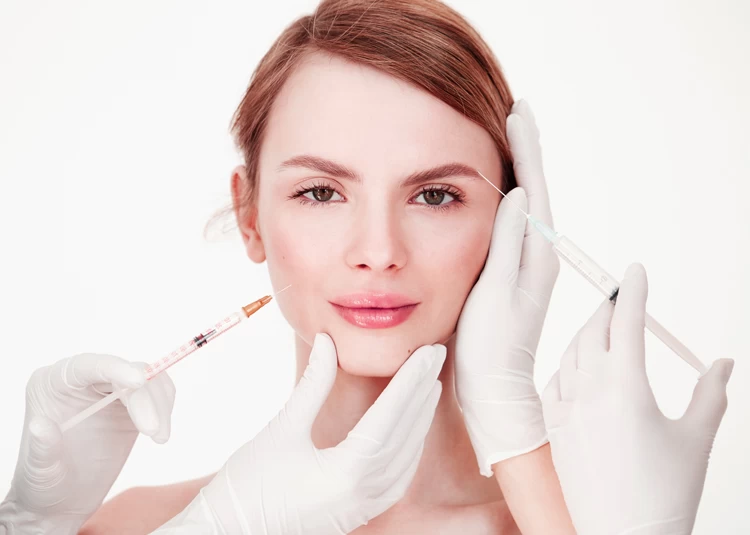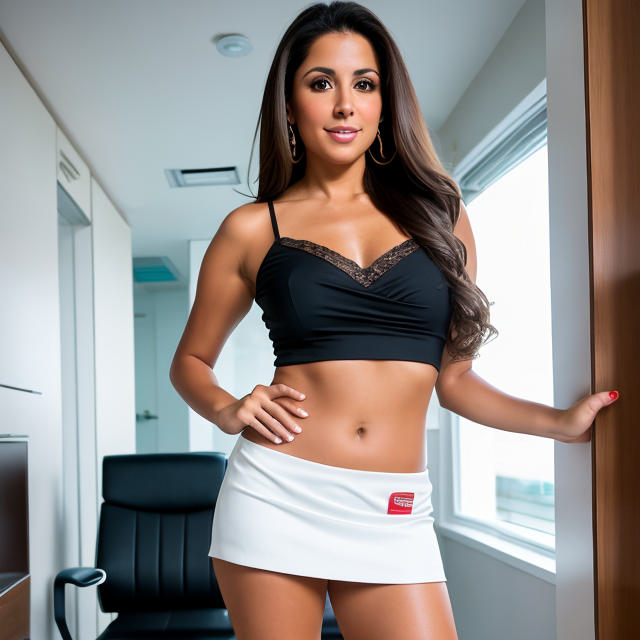Dysport vs Botox: Understanding the Differences in Wrinkle Treatment
Posted on: March 26, 2024
Understanding Dysport and Botox
Popular Injectables
Dysport and Botox are derived from botulinum toxin. They serve as popular injectables for cosmetic purposes. Both treatments, botox and other cosmetic procedures, share a common goal: to smooth out facial wrinkles, including smile lines, without surgery and combat aging.
Dysport, similar to botox treatments, has been gaining attention for its effectiveness, particularly in treating glabellar lines, as a cosmetic wrinkle treatment, alongside options like laser treatments. These are the frown lines seen between the eyebrows. Many find this precision appealing.
Noninvasive Nature
The noninvasive nature of both Dysport and Botox, as injectable treatment options utilizing an injection technique for cosmetic treatment, is a significant advantage over laser treatments. Patients appreciate the minimal downtime associated with these treatments. There’s no need for surgical recovery after laser treatments, botox, or other cosmetic treatment procedures, making them convenient options for many.
These procedures involve quick, in-office visits. Clients, whether undergoing laser treatments or botox, can often return to their daily activities immediately after the procedure. This convenience adds to their appeal.
Growing Popularity
Dysport’s popularity has been on the rise due to its specific effectiveness, as noted by doctors, in addressing certain types of wrinkles, compared to botox and laser treatments. It works well for those seeking targeted improvements in their appearance through laser treatments, botox, and consultations with a doctor.
Botox remains a trusted name in cosmetic treatments, known for its versatility and wide range of applications. Its ability to treat various areas of the face keeps botox at the forefront of cosmetic solutions.
Nature and Mechanism Explained
How They Work
Dysport and Botox utilize a neurotoxin to achieve their wrinkle-reducing effects. This neurotoxin, botox, temporarily paralyzes the targeted facial muscles, preventing them from contracting. It’s these muscle contractions, often targeted by botox, that lead to the formation of wrinkles.
When injected, both products, including botox, block the release of a chemical messenger responsible for muscle contraction. The result is a smoother, more youthful appearance. However, the treatments are not permanent. They typically last between 3 to 4 months before the body gradually breaks down the botox neurotoxin.
Potency Differences
While Dysport and Botox are based on the same type of molecule, there are differences in their potency and how they’re used. Dysport, unlike botox, tends to spread more after injection, which can be beneficial when treating larger areas like the forehead.
Botox, on the other hand, offers more precision for smaller areas or where finer control is desired. This difference means that dosage requirements can vary between the two. A higher dose of Dysport may be needed compared to Botox for achieving similar results.
Duration of Effects
Both botox treatments have a typical effectiveness period of 3-4 months. Factors such as the individual’s metabolism, the area treated, botox, and muscle mass can influence this duration. For example, treating stronger muscles like those in the masseter muscle region with botox might require more frequent sessions.
Treatment Outcomes Compared
Onset Speed
Many patients notice a significant difference in the onset of visible results between Dysport and Botox. Dysport, similar to botox, tends to work quicker, showing effects within 2-3 days after the procedure.
Botox, on the other hand, usually takes about a week for patients to see full results. This makes Dysport a preferred option for those seeking faster recovery time.
Cost Comparison
Despite Dysport’s lower price per unit, the overall costs end up similar to Botox. This is because treating with Dysport, unlike botox, often requires a higher dosage to achieve comparable results.
Patients should consider this when comparing these treatments. The choice may come down to individual budget and treatment goals.
Versatility
Botox stands out for its versatility in treating various types of wrinkles beyond just glabellar lines. It has proven effective across different areas of the face, offering many similarities in long-term outcomes with Dysport and Botox.
However, both treatments have their unique strengths. The decision often depends on specific patient needs and desired outcomes.
Side Effects and Safety
Common Side Effects
Both Dysport and Botox can cause minor side effects. Patients often report minimal bruising or swelling at the botox injection site. These botox effects typically resolve on their own within a few days. Muscle weakness in the treated area is another reported side effect of botox but is generally temporary.
Pain at the injection site is also a common complaint. However, this discomfort is usually mild and short-lived. It’s crucial for patients to discuss any medical conditions they have with their provider beforehand to minimize risks.
Professional Consultation
Consulting with a qualified professional cannot be overstressed. They assess individual needs and medical history to ensure the safety and efficacy of the botox treatment. This step significantly reduces the risk of adverse reactions.
A professional can also advise on the proper care post-treatment, helping to mitigate any potential side effects of botox quickly.
FDA Approval
Both treatments, including botox, boast an FDA approval for cosmetic use, highlighting their safety profile. This approval means that both injectables have undergone rigorous testing to ensure they are safe for public use when administered correctly.
Decision Factors for Wrinkle Treatment
Wrinkle Type
Facial wrinkles vary, from smile lines around the mouth to botox-treated forehead lines above the eyebrows. Dysport, unlike botox, tends to spread more, making it suitable for larger areas like the forehead. Botox, on the other hand, offers precision for smaller areas such as between the eyebrows.
Choosing depends on the wrinkle’s location and type. For widespread wrinkles, Dysport might be the go-to. For targeted treatment, consider Botox.
Budget Considerations
Both treatments present similar costs for comparable results. However, pricing for botox can differ based on geographic location and the expertise of the practitioner.
It’s crucial to weigh financial implications alongside desired outcomes. Sometimes, minor price differences matter less than achieving optimal results.
Expert Consultation
Consulting with a skincare expert cannot be overstated. They assess individual goals and skin conditions to recommend the best course of action.
Experts consider past experiences with botox and other wrinkle treatments, and any side effects experienced. This ensures a tailored approach that maximizes benefits while minimizing risks.
Treatment Variances Highlighted
Target Areas
Dysport, similar to botox, primarily targets glabellar lines, those vertical lines that develop between the eyebrows. It’s highly effective in this specific area, offering a focused botox approach to smoothing out these prominent wrinkles.
Botox, on the other hand, has a broader application range. Botox can address fine lines and wrinkles in different areas of the face. This includes crow’s feet, forehead lines, and even smile lines around the mouth, often treated with botox. Its versatility makes botox a go-to for many seeking comprehensive facial rejuvenation.
Dosage Differences
The amount of Dysport needed to achieve desired results often differs from Botox. This is due to its botox formulation and how it spreads in the treatment area.
Patients might require more units of Dysport compared to Botox for similar effects. This variability influences both the overall treatment plan and potential costs.
Biological Factors
Individual biological responses play a significant role in treatment outcomes. Some people may find Dysport more effective for their skin type or wrinkle depth, while others see better results with Botox.
This variability underscores the importance of consulting with a skilled professional who can tailor treatments to individual needs.
Personalized Treatment Considerations
Biological Factors
The effectiveness of Dysport and Botox hinges on the individual’s biological makeup. Each patient’s skin reacts differently to these cosmetic treatments. This variability means that one person might see better results with Dysport, while another finds Botox more effective.
Professionals at clinics like Selah Medi Spa understand this. They emphasize the importance of considering these factors when choosing a treatment. It’s not just about the botox product but how your body responds to it.

Professional Guidance
Seeking advice from a medical professional is crucial. They assess your unique needs and suggest the most suitable injectable treatment, such as botox. Their expertise in botox injection technique ensures that the treatment not only meets your cosmetic goals but also aligns with your body’s specific responses.
Clinics offer consultations for this purpose. During these sessions, they create a customized treatment plan tailored to your individual needs and skincare goals, including botox.
Consultation Benefits
Scheduling a consultation provides several benefits:
- It offers an opportunity to discuss personal skincare goals.
- The medical professional can evaluate your suitability for either Dysport or Botox.
- You receive a customized treatment plan that considers both your aesthetic desires, including botox, and biological makeup.
Final Thoughts on Choosing
Speed Results
People often look for quick fixes in today’s fast-paced world. The primary difference between Dysport and Botox lies in how swiftly they show results. Dysport, in comparison to botox, might take the lead if time is of the essence. It begins to work within a few days, while Botox might need a little bit more time.
On the other hand, longevity plays a crucial role. Botox tends to last a bit longer than Dysport, making it a go-to option for those prioritizing duration over speed.
Treatment Areas
Dysport, unlike botox, is typically preferred for larger areas like the forehead due to its ability to spread more easily. This makes botox an ideal choice for people needing extensive coverage with fewer injections.
Botox, however, is renowned for its precision in treating smaller, more defined areas. It’s often the better option, like botox, for fine lines around the eyes and mouth.
Cost Consideration
Cost is a significant factor when deciding between these two options. Generally, Dysport may be less expensive per unit but could require more units to achieve similar results as Botox in certain areas.
Ultimately, both treatments offer pros and cons depending on individual needs and preferences.
Final Remarks
Deciding between Dysport and Botox for wrinkle treatment boils down to your specific needs, preferences, and the advice of a trusted medical professional. Both options offer effective solutions for smoothing out those unwelcome lines, yet they come with their own set of characteristics in terms of onset time, duration, and subtle differences in application. It’s crucial to weigh these factors alongside potential side effects and personal health considerations. Remember, the goal is to achieve a natural, refreshed look that aligns with your aesthetic desires.
Now’s the time to take action. Schedule a consultation with a certified dermatologist or cosmetic surgeon who can provide personalized advice tailored to your unique facial structure and skin concerns. Armed with the insights from this discussion, you’re well-equipped to make an informed decision that best suits your goals for a youthful appearance. Your journey towards a smoother, more confident you starts today.
Frequently Asked Questions
What are the main differences between Dysport and Botox?
Dysport and Botox both target wrinkles but differ in formulation, onset time, and diffusion properties. Dysport may spread more, offering wider treatment areas.
How do Dysport and Botox work?
Both treatments temporarily relax muscles by blocking nerve signals, effectively reducing the appearance of wrinkles.
Which lasts longer, Dysport or Botox?
The effects of both treatments are temporary, but Botox typically lasts 3-6 months, while Dysport’s results may vary slightly shorter or comparably depending on the individual.
Are there any side effects associated with Dysport and Botox?
Yes, common side effects include minor swelling, bruising at the injection site, and rare cases of headaches or allergic reactions.
How should I choose between Dysport and Botox for wrinkle treatment?
Consider factors like your specific cosmetic goals, the area being treated, your medical history, and consultations with a qualified professional to make an informed decision.
Can Dysport or Botox provide a personalized treatment approach?
Yes, both treatments can be tailored to your unique facial structure and aesthetic goals through careful planning by an experienced practitioner.
What should be my final consideration when choosing between Dysport and Botox?
Evaluate each option’s potential outcomes, side effects, cost, and practitioner expertise. Personal preferences and specific treatment goals play a crucial role in decision-making.





